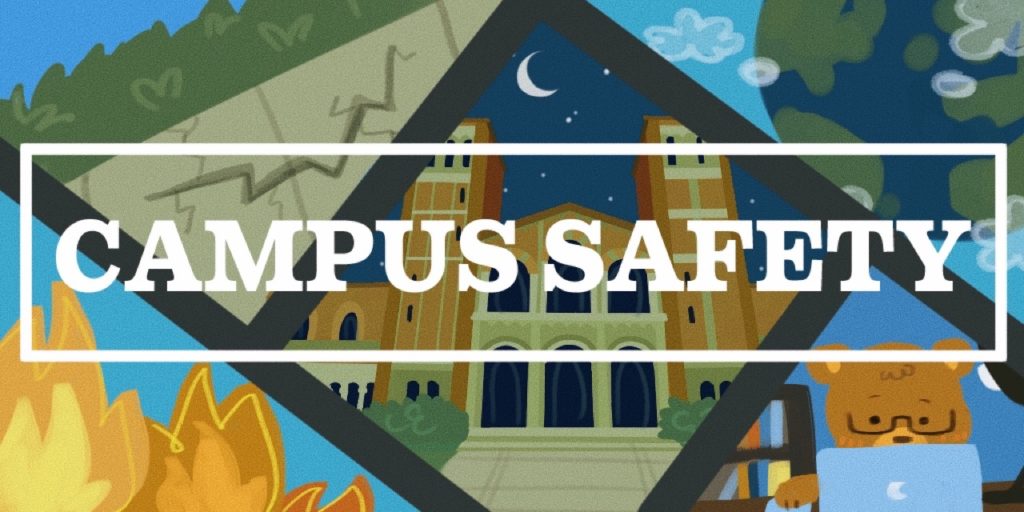Editor’s note: Editorials are intended to serve as the jumping-off point, not the conclusion, to discussion. As part of the Daily Bruin’s commitment to its readers, the board hopes to present a responsible and clear analysis of relevant events and news items affecting the lives of those we serve, but our editorials are not representative of the Daily Bruin’s views on issues as a whole. We encourage all readers to reach out to our board members and to respond to our editorials.

UCLA’s campus is almost 100 years old, and with old age comes problems. In the face of an ever-changing world, the editorial board examines what the university can do to keep Bruins safe from a torrent of dangers, whether they be natural or man-made.
Being at UCLA for long enough means experiencing an earthquake or two.
Most times, it doesn’t feel like much. But for the times an earthquake becomes more than just a couple seconds of shuffle, UCLA needs to prepare its students, staff and faculty for the worst.
UCLA has some level of earthquake preparedness, as all universities should have. After the University of California updated its seismic policies in 2017, UCLA developed plans to ensure its buildings are in compliance with updated safety criteria, according to a 2019 campus update. The university has also trained CERT members and building and area wardens on evacuation plans, initial response and rescue communication with first responders. Top leadership and emergency responders engage in regular simulations as well.
In the same update, administrators said notification systems like the BruinAlert and Bruins Safe Online app would provide information on what to do during an earthquake in addition to real-time information during a campus emergency.
With an influx of students who have never been on campus this fall, there are more Bruins than ever who are not familiar with the ins and outs of buildings, safe areas on campus and emergency protocols. This could spell danger in the event of a large earthquake, which may not be far out into the future. The San Andreas fault is less than 150 miles from campus, and the last big temblor to occur on the fault was 161 years ago.
Everyone should feel confident in knowing first, what to do during an earthquake and second, how UCLA will respond. Recent news of structural disasters, like the collapsed building in Florida and the Haiti earthquake, are reminders that it’s never too early to begin preparing for the next catastrophe.
Most of us know to stop, drop and take cover when the ground starts shaking, but what to do after that is a mystery. Administrators must do everything they can to clearly and regularly communicate the university’s earthquake safety policies to students and staff.
For starters, UCLA can make sure that all buildings have ample signage that reminds Bruins of the best routes to exit a building or what rooms are safest to shelter in. It must also educate students about the areas on campus and the Hill that are safest to go to during large earthquakes, whether that be through email, during class or as a MyUCLA alert.
Yes, UCLA is a large campus – a school-wide drill might not be the easiest to pull off. But drills could give community members, especially those who may not be able to flee as easily as others, the confidence in knowing how to navigate the situation in real-time. Drills could be quarterly at randomly selected buildings on campus.
California already holds a “Great ShakeOut” yearly, where people across the state simulate the response to an earthquake. Requiring all students to take part in this event would be a great start in preparing the community for an earthquake.
Bottom line, administrators need to inform students and staff on how the university will work with first responders during the onset of an earthquake and how it will support students in the aftermath.
UCLA is doing good work in improving earthquake preparedness – but that doesn’t mean the work is done.

